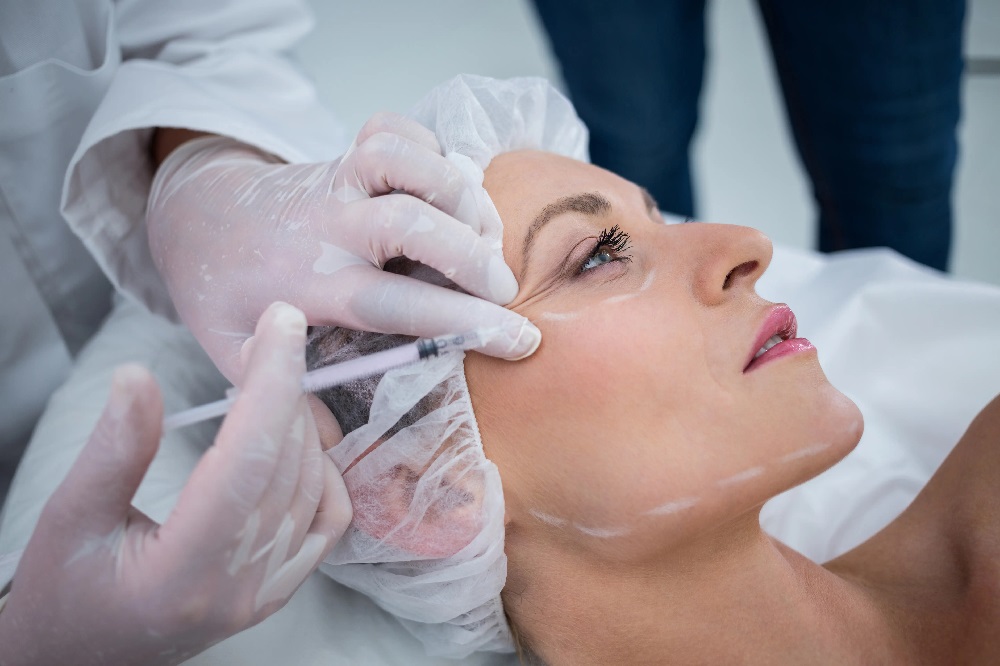Introduction
Facial rejuvenation has become increasingly popular as more people seek to maintain a youthful appearance. One of the innovative techniques in this domain is the thread lift, a minimally invasive procedure that offers an alternative to traditional facelifts. This article will delve into the intricacies of thread lifts, compare them to other facial rejuvenation methods available in Melbourne, and provide valuable insights from experts and patients.
What is a Thread Lift?
A thread lift is a cosmetic procedure designed to lift and tighten the skin. It involves the use of temporary sutures to produce a subtle but visible “lift” in the skin. Instead of removing the patient’s loose facial skin surgically, the cosmetic surgeon simply suspends it by stitching up portions of it. This has the effect of pulling the skin back slightly and therefore lifting and tightening the face.
Historically, thread lifts have evolved from basic techniques to more sophisticated methods. Initially introduced in the 1990s, the procedure has seen significant advancements, particularly in the materials used for the threads and the techniques for their insertion.
In Melbourne, thread lifts have gained substantial popularity due to their less invasive nature compared to traditional facelifts. The trend reflects a growing preference for procedures that offer effective results with minimal downtime.
Types of Thread Lifts
Thread lifts can be categorized based on the materials used for the threads:
PDO Thread Lift
Polydioxanone (PDO) threads are absorbable synthetic sutures that have been used in surgery for many years. They are known for their safety and efficacy. PDO threads come in different types, such as mono threads, cog threads, and screw threads, each serving a specific purpose in lifting and tightening the skin.
PLLA Thread Lift
Poly-L-lactic acid (PLLA) threads are also absorbable and stimulate collagen production. They are known for providing longer-lasting results compared to PDO threads. PLLA threads are effective in contouring and volumizing the face.
PCL Thread Lift
Polycaprolactone (PCL) threads are the newest type of absorbable sutures used in thread lifts. They offer the longest-lasting results, as they take a longer time to dissolve compared to PDO and PLLA threads. PCL threads provide excellent support and collagen stimulation.
Comparison of Different Types
Each type of thread offers unique benefits. PDO threads are great for beginners due to their safety and affordability. PLLA threads are ideal for patients seeking longer-lasting results. PCL threads are suitable for those who want the maximum duration of effect. The choice of thread depends on individual needs and the recommendation of the cosmetic surgeon.
Benefits of Thread Lifts
Thread lifts offer several advantages over traditional facelifts and other rejuvenation techniques:
Minimally Invasive Nature
One of the most significant benefits of a thread lift is its minimally invasive nature. Unlike traditional facelifts, which require incisions and extensive surgery, thread lifts involve only small sutures inserted under the skin.
Immediate Results
Patients can see an immediate lifting effect after the procedure, which continues to improve as the threads stimulate collagen production over the following months.
Natural Look
The results of a thread lift are often more natural-looking compared to some other rejuvenation techniques. The skin is lifted in a way that maintains the natural contours of the face.
Longevity of Results
While the longevity of results can vary, many patients enjoy the benefits of a thread lift for up to 1-3 years, depending on the type of threads used and individual skin characteristics.
Procedure of a Thread Lift
Pre-Procedure Consultation
Before undergoing a thread lift, a thorough consultation with a qualified cosmetic surgeon is essential. This consultation involves assessing the patient’s skin condition, discussing expectations, and determining the most suitable type of thread lift.
Preparation Steps
Preparation for a thread lift includes avoiding certain medications that can increase bleeding risk, such as aspirin and anti-inflammatory drugs. Patients are also advised to avoid alcohol and smoking in the days leading up to the procedure.
Steps During the Procedure
The procedure typically begins with the application of local anesthesia to ensure patient comfort. The surgeon then inserts the threads into the skin using a fine needle. The threads are carefully positioned to achieve the desired lifting effect. The entire process usually takes about 30 to 45 minutes, depending on the number of threads used and the areas treated.
Post-Procedure Care
Post-procedure care is crucial for optimal results. Patients are advised to avoid strenuous activities and facial massages for a few weeks. It is also important to follow the surgeon’s instructions regarding skincare and any prescribed medications.
Risks and Side Effects
Common Side Effects
Common side effects of thread lifts include mild swelling, bruising, and soreness at the treatment site. These effects typically subside within a few days.
Rare Complications
Rare complications can include infection, thread migration, or the formation of visible sutures under the skin. These issues are uncommon and can often be managed effectively if they occur.
Mitigation and Management
To mitigate risks, it is essential to choose a qualified and experienced cosmetic surgeon. Following post-procedure care instructions meticulously also plays a significant role in preventing complications.
Thread Lift vs. Other Facial Rejuvenation Procedures
Thread Lift vs. Surgical Facelift
While a surgical facelift offers more dramatic and long-lasting results, it involves a significant recovery period and higher risk of complications. A thread lift, on the other hand, provides a subtler lift with minimal downtime.
Thread Lift vs. Dermal Fillers
Dermal fillers are used to add volume to specific areas of the face, whereas thread lifts primarily focus on lifting and tightening the skin. Both procedures can be complementary, depending on the desired outcome.
Thread Lift vs. Botox
Botox works by relaxing muscles to reduce wrinkles, while thread lifts physically lift the skin. Botox is effective for dynamic wrinkles caused by muscle movement, whereas thread lifts are better suited for addressing sagging skin.
Thread Lift vs. Laser Treatments
Laser treatments are effective for improving skin texture and tone, but they do not provide the lifting effect that thread lifts offer. Combining laser treatments with thread lifts can enhance overall facial rejuvenation results.
Expert Insights
Quotes from Dermatologists
Dr. Emma Brown, a renowned dermatologist in Melbourne, states, “Thread lifts have revolutionized facial rejuvenation by offering a less invasive alternative with impressive results.”
Insights from Cosmetic Surgeons
Dr. David Lee, a leading cosmetic surgeon, adds, “The advancement in thread materials and techniques has made thread lifts a preferred choice for many patients seeking subtle yet effective facial rejuvenation.”
Opinions from Aesthetic Specialists
Aesthetic specialist Sarah Collins emphasizes, “Thread lifts are an excellent option for those looking to enhance their appearance without the risks and recovery time associated with surgical procedures.”
Preventive Measures and Maintenance
Skincare Routine Post-Procedure
Maintaining a good skincare routine is essential for prolonging the results of a thread lift. This includes using gentle cleansers, moisturizers, and sunscreen to protect the skin.
Lifestyle Adjustments
Healthy lifestyle choices, such as a balanced diet, regular exercise, and adequate hydration, can enhance the longevity of thread lift results.
Follow-Up Treatments
Periodic follow-up treatments may be recommended to maintain the effects of a thread lift. These can include additional threads or complementary procedures like fillers or Botox.
FAQs
- How long does a thread lift last?
The results of a thread lift typically last between 1 to 3 years, depending on the type of threads used and the individual’s skin condition.
- Is a thread lift painful?
A thread lift is generally well-tolerated, with local anesthesia used to minimize discomfort during the procedure.
- What is the recovery time for a thread lift?
Recovery time is minimal, with most patients resuming normal activities within a few days. Some swelling and bruising may occur but typically subside within a week.
- Are there any risks associated with thread lifts?
While thread lifts are safe, potential risks include infection, thread migration, and visible sutures. Choosing an experienced practitioner can help mitigate these risks.
Conclusion
In summary, thread lifts offer a minimally invasive, effective solution for facial rejuvenation, providing immediate results with minimal downtime. They are a popular choice in Melbourne due to their natural-looking outcomes and lower risks compared to traditional facelifts. For those considering facial rejuvenation, a thread lift can be an excellent option, particularly when combined with other treatments to enhance overall results.

